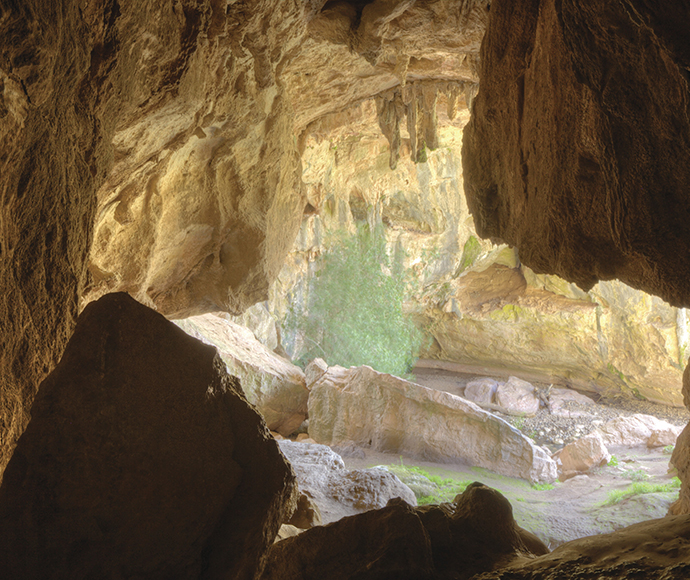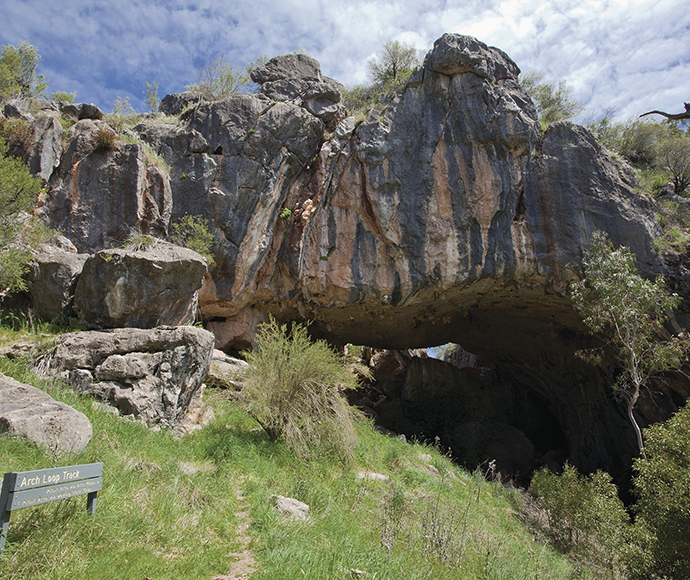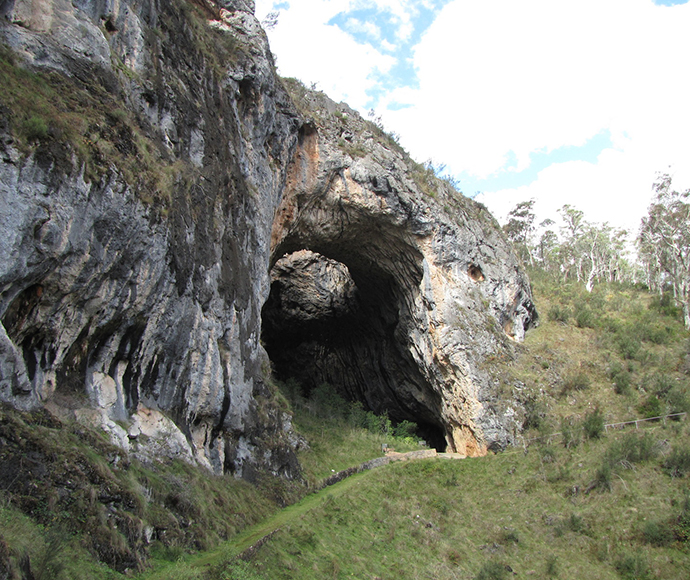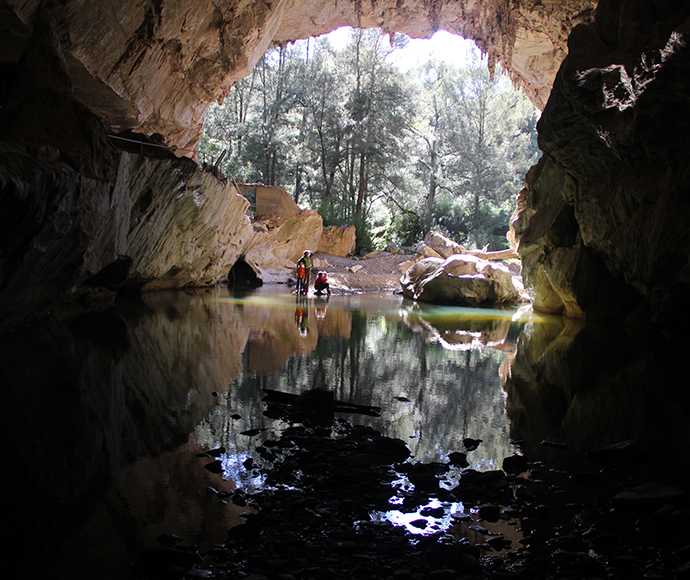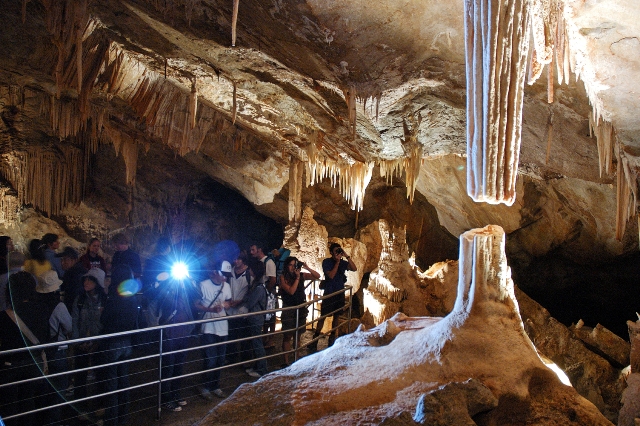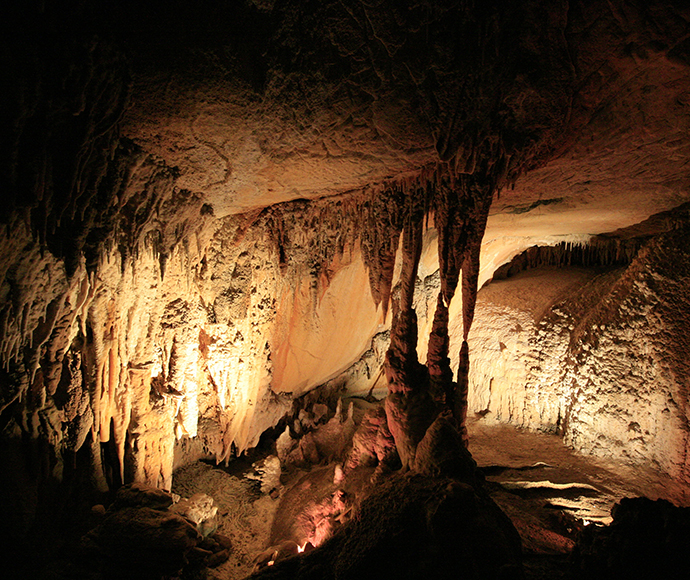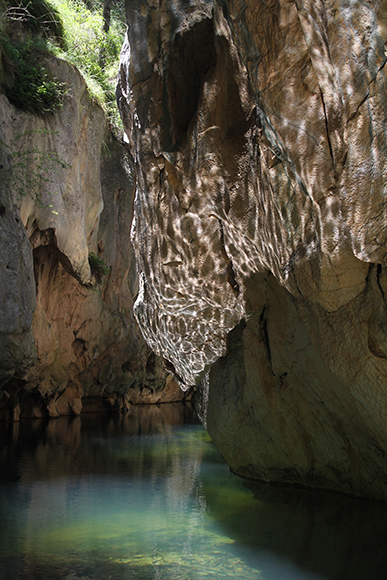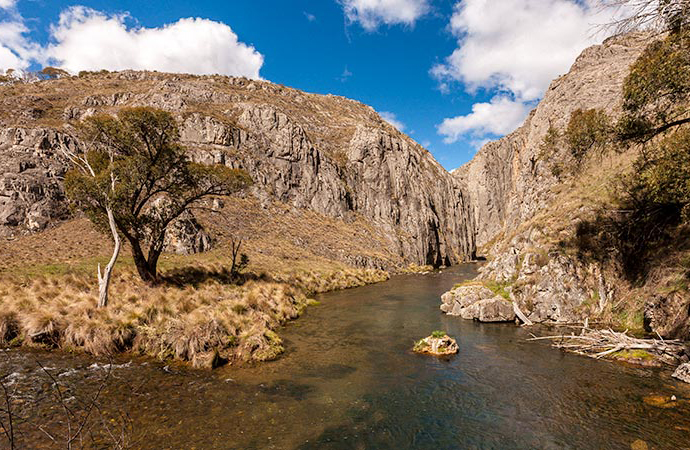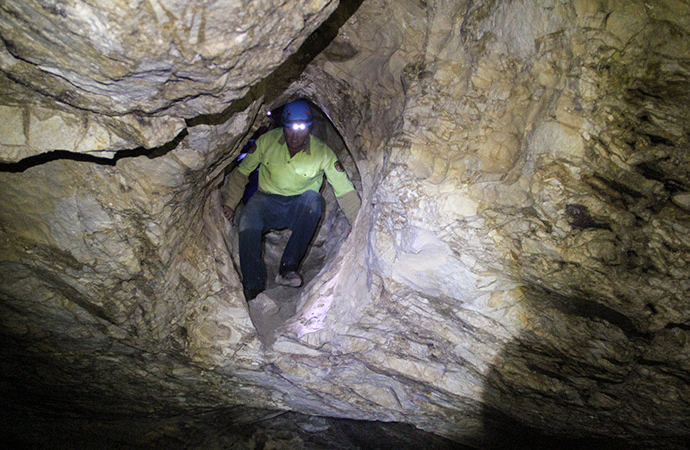'Karst' is a distinct landform shaped largely by the dissolving action of water on carbonate rock such as limestone, dolomite and marble. This process typically occurs over thousands or millions of years, resulting in a variety of surface and below-ground features, including gorges, sinkholes, underground streams and caves.
Karst features interact with the environment to produce complex ecosystems supporting plants, animals and micro-organisms which, in many cases, are unable to survive elsewhere. These species contribute to NSW biodiversity.
NSW karst environments are among the oldest and most complex in the world, giving them outstanding national and international importance. They contain geological features and processes which indicate their exposure to a vast range of natural processes. They may also have special meaning to Aboriginal people as past sources of food and shelter and as places for ceremony.
The majority of NSW karst environments occur in limestone and can be found in over 100 separate locations throughout the state. These environments are recognised as having one of the most complex processes of cave evolution and development seen so far.
Caves are a well-known feature of karst environments and typically form in 2 ways:
- from surface streams finding their way through cracks in the ground and forming underground rivers
- by groundwater rising up through cracks in rocks under the influence of heat and pressure, dissolving out mazes and rounded chambers.
Caves provide critical habitat for a variety of plant and animal communities and are nature's time capsules, preserving evidence of past life, climates and earth-forming processes. Caves are highly valued by the community as places for recreation, shelter and refuge and provide water for more than a quarter of the world's population.
Protection and conservation
Karst landforms or environments consist of geological and biological features which are highly sensitive to change because:
- On the surface, their thin layers of soil make it is easy for them to erode and become infested with weeds.
- Below ground, the many solution tubes and water-filled fissures can quickly spread pollution and disease.
- Their features and animals need very specific conditions to survive and natural karst processes to continue.
Karst environments in New South Wales were among the earliest protected areas in the world. The Wombeyan Caves were reserved for the purposes of leisure and cave preservation in 1865, followed by the Jenolan Caves in 1866, both before the declaration of the world's first national park (Yellowstone) in 1872.
We are responsible for over 40 karst environments (PDF 446KB), including 15 sites on World Heritage properties and 4 karst conservation reserves.
Karst conservation reserves, which recognise the sensitivity of karst environments and their special management requirements, have been established at the cave sites of:
Close to half of our cavernous karst environments are protected in national parks or reserves.
Some, like the Jenolan Karst Conservation Reserve, have extensive cave systems which are the focus for tourism and research activities and provide critical habitat for migratory bats and other cave-dependent animals.
Our research into karst environments informs our conservation activities and helps us understand the complex interactions between surface and below-ground environments. We have information available to help prospective researchers in developing research proposals.
We work with other government agencies, the community and volunteer organisations on a range of karst-related issues. We also consult with experts via the Karst Management Advisory Committee on matters relating to conserving and managing karst areas.
